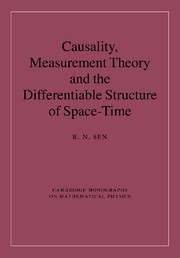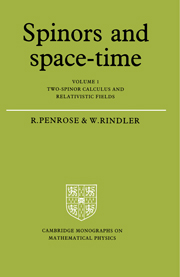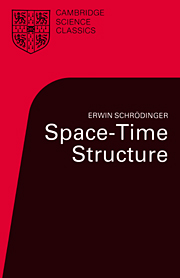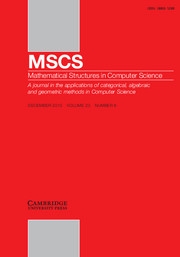Causality, Measurement Theory and the Differentiable Structure of Space-Time
Introducing graduate students and researchers to mathematical physics, this book discusses two recent developments: the demonstration that causality can be defined on discrete space-times; and Sewell's measurement theory, in which the wave packet is reduced without recourse to the observer's conscious ego, nonlinearities or interaction with the rest of the universe. The definition of causality on a discrete space-time assumes that space-time is made up of geometrical points. Using Sewell's measurement theory, the author concludes that the notion of geometrical points is as meaningful in quantum mechanics as it is in classical mechanics, and that it is impossible to tell whether the differential calculus is a discovery or an invention. Providing a mathematical discourse on the relation between theoretical and experimental physics, the book gives detailed accounts of the mathematically difficult measurement theories of von Neumann and Sewell.
- Gives detailed accounts of the measurement theories of von Neumann and Sewell
- Key concepts and results are explained, whilst avoiding technical proofs
- The relation between theoretical and experimental physics is analysed in depth
Reviews & endorsements
"Sen has written a superb book. It should be of special interest to any serious senior undergraduate or graduate student in theoretical physics, and to mathematical physicists and mathematicians working in quantum theory, quantum field theory, relativity, or the foundations of physics."
Howard E. Brandt, Mathematical Reviews
"A great deal of interesting historical material is included in these pages, some of it hard to find elsewhere, and the author assists his readers considerably by providing extensive mathematical appendices, within which many basic results are derived. For these reasons, and taking into account the fundamental importance of the subject matter, I would consider that the book has a good claim for a place on library shelves."
Dr. Peter J. Bussey, Contemporary Physics
"Sen has written a superb book."
Howard E. Brandt, MAA Reviews
Product details
November 2014Paperback
9781107424586
412 pages
244 × 170 × 21 mm
0.65kg
Available
Table of Contents
- Prologue
- Part I: Introduction to Part I
- 1. Mathematical structures on sets of points
- 2. Definition of causality on a structureless set
- 3. The topology of ordered spaces
- 4. Completions of ordered spaces
- 5. Structures on order-complete spaces
- Part II: Introduction to Part II
- 6. Real numbers and classical measurements
- 7. Special topics in quantum mechanics
- 8. Von Neumann's theory of measurement
- 9. Macroscopic observables in quantum physics
- 10. Sewell's theory of measurement
- 11. Summing-up
- 12. Large quantum systems
- Epilogue
- Appendixes
- References
- Index.







